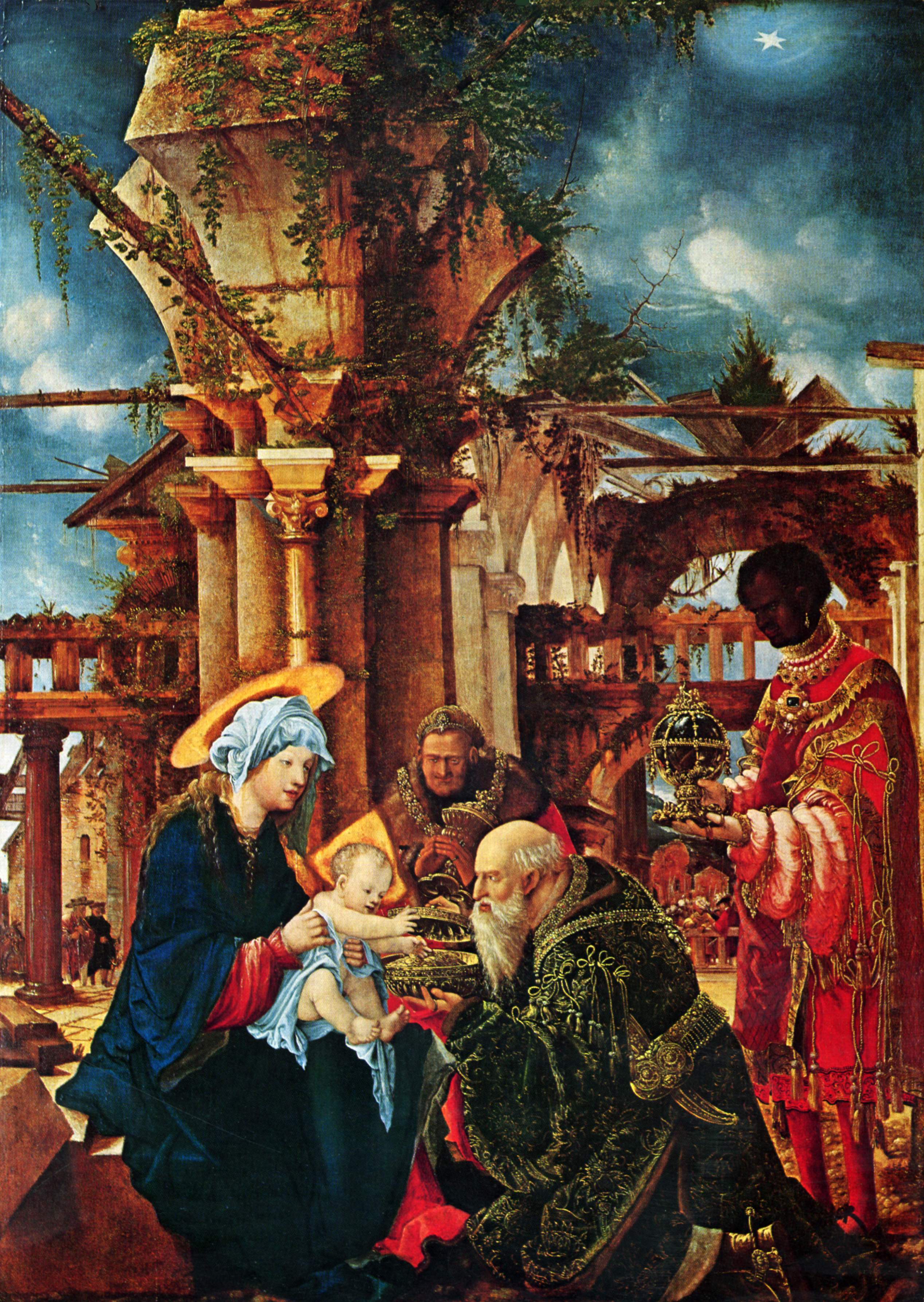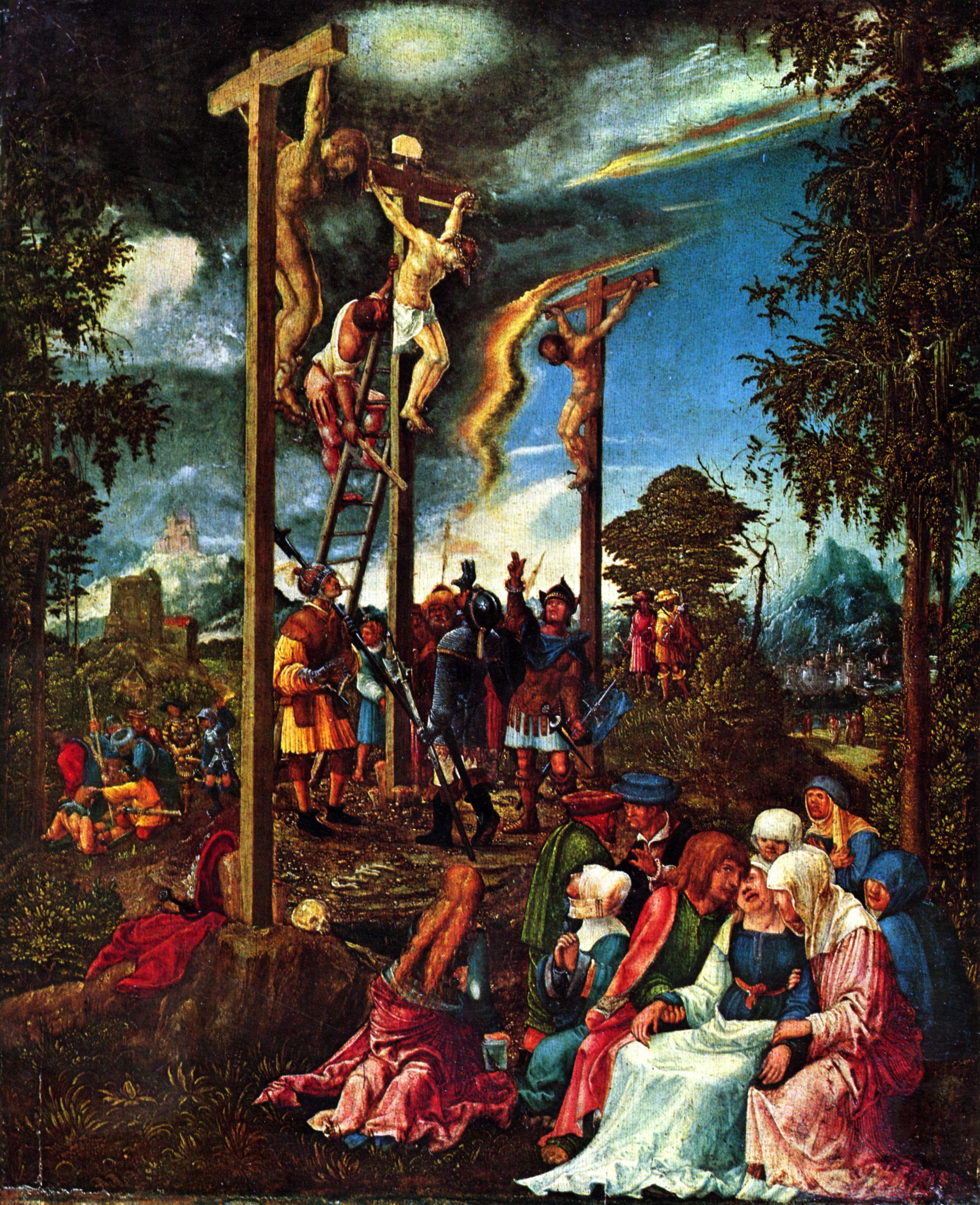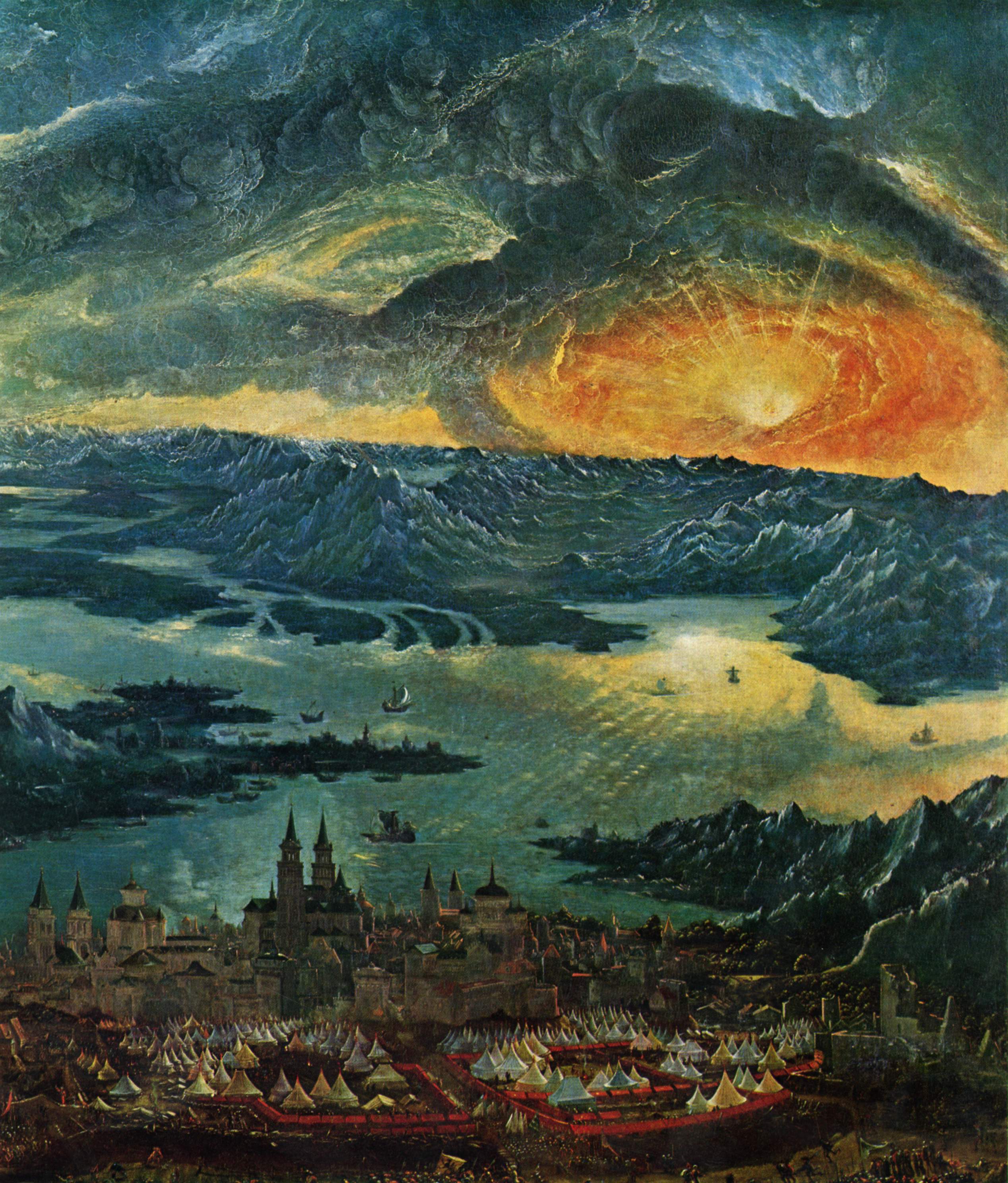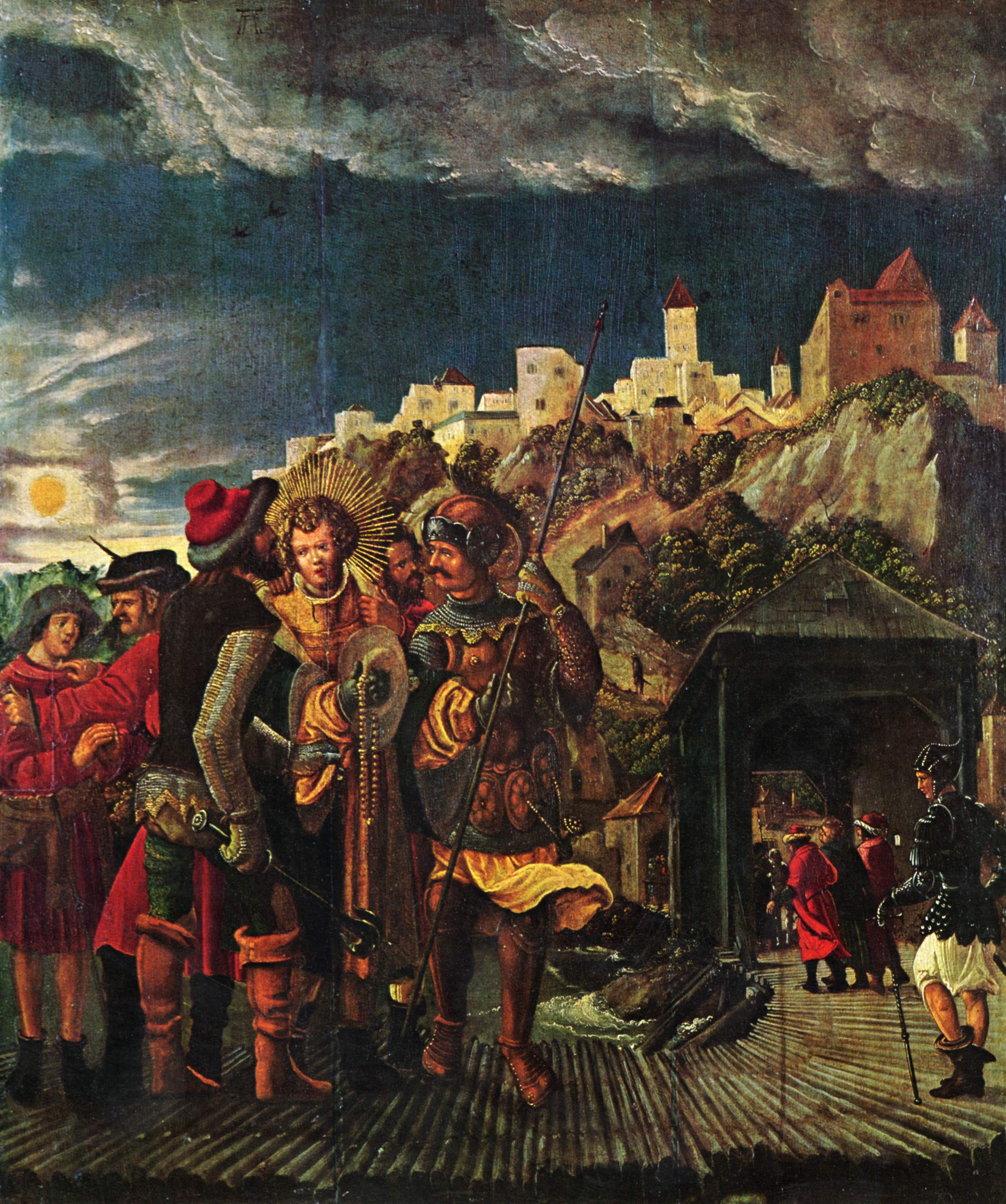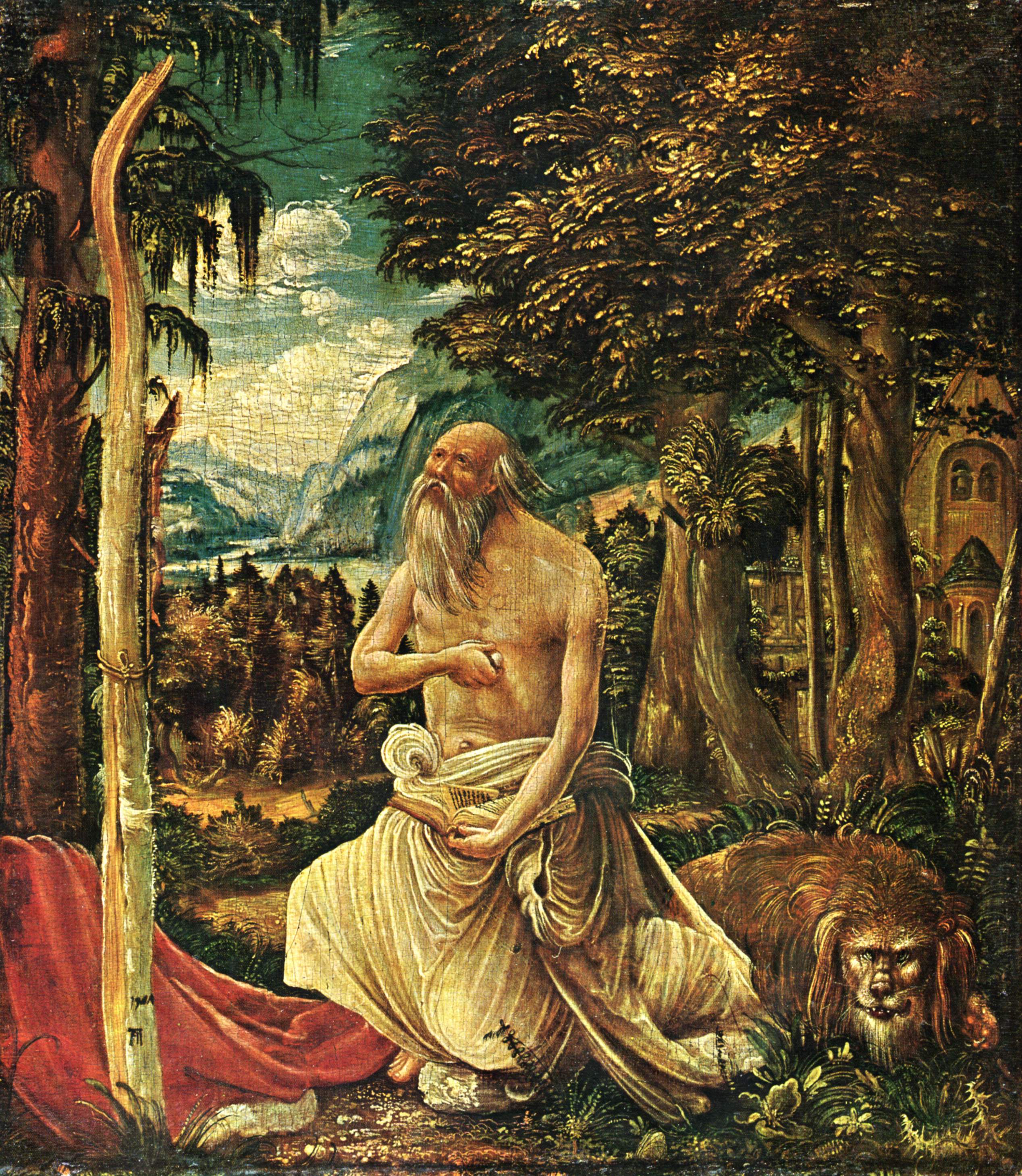Albrecht Altdorfer
Albrecht Altdorfer (c. 1480 perhaps in Altdorf bei Landshut, Regensburg, † February 12, 1538 in Regensburg ) was a German painter, engraver and architect of the Renaissance. He is next to Wolf Huber as the main champion of the so-called Danube School, a style of movement along the Danube in Bavaria and Austria. The artists of the art direction are also known as "wild painter of the Danube". Together with Albrecht Dürer, whose student he is, he is seen as the founder of the Nuremberg minor masters.
Life
Little is known about the artist's life. His father was probably the Regensburger painter Ulrich Altdorfer. Through documents ensures that Altdorfer on March 13, 1505 acquired the Regensburger civil rights.
1517 was the respected citizen who worked for the Emperor Maximilian I., elected to the exterior of the Council of the City of Regensburg. Under the delegation of councilors that the Regensburg Jews ordered the deportation on February 21, 1519 Also Albrecht Altdorfer was. For the built at this location Sanctuary " For Beautiful Madonna " he would later make several woodcuts, painting the church flag and the drain bull illuminate.
In 1526 the artist was a member of the inner council and city architect of Regensburg. In this role, he built a slaughter house (1527 ) and revised the fortifications of the city (1529 /30). On September 15, 1528, he rejected the election as mayor in order to accomplish an important work, probably the Alexander battle for Duke Wilhelm IV of Bavaria can. 1533 is his signature as one of 15 Council members under a tender for a Protestant preacher. As an ambassador of the city of Regensburg Altdorfer traveled to Vienna in 1535 to Ferdinand I., to deliver a letter of apology to the city, which had fallen precisely because of the political and religious machinations of favor.
Works
1506 is the earliest date that appears on the drawings and paintings Altdorfer. From his paintings today are particularly two works known: the resulting 1509-1518 Sebastian altar of St. Florian near Linz, with its dramatic Mannerist scene images as well as The Battle of Alexander ( 1528-1529 ) which was commissioned by Duke Wilhelm IV of Bavaria. It shows a size of 158 × 120 cm the battle of Alexander the Great against the Persian king Darius at the Battle of Issus in 333 BC
To 1522, he created his first pure landscape paintings and drawings. Altdorfer made in European painting for the first time to the actual landscape and self- image issue. Even in his religious paintings and altarpieces people were only accessory to landscape painting. He captured the light in glowing colors and painted for the first time in German art landscapes without figures.
Of his 55 panel paintings are some of the Kunsthistorisches Museum in Vienna. 124 drawings and designs ( including the triumphal procession of the emperor Maximilian I. ) have been preserved. His graphic oeuvre comprises about 200 sheets, mostly woodcuts and engravings, but also some etchings.
Exhibition and research
From May to October 1938 was held at the Munich State Gallery for the 400th anniversary of his death, the memorial exhibition "Albrecht Altdorfer and his circle " instead, which was curated by Ernst Buchner. In the official catalog 56 paintings and 270 drawings, prints, etchings and woodcuts as well as a dozen pieces of frescoes Altdorfer are listed. As recently rediscovered sensation of the so-called Old German panel painting was presented at that time Altdorfer Beautiful Maria, which was issued in an altar frame. The latter was specially made by the prescription of appropriate Altdorfer pressure. In this framework the Beautiful Maria is currently in the permanent collection of the Diocesan Museum of Regensburg.
The 450th year of death drawings Deckfarbenmalerei and prints Altdorfer were exhibited in Berlin and Regensburg.
In February 2011, the University of Regensburg hosted a art history symposium entitled Albrecht Altdorfer. Art as second nature.



